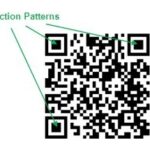Replacing a faulty Mulf unit with a MULF2-HI in a BMW can sometimes lead to unexpected Bluetooth connectivity problems. This guide details a real-world troubleshooting experience and solution for restoring Bluetooth functionality after a MULF2-HI upgrade in a pre-03/2007 E93 335i.
Understanding the MULF and MULF2-HI
The original MULF unit in this BMW, manufactured by Visteon, failed after eight years, exhibiting symptoms like intermittent Bluetooth connectivity issues and music playback interruptions (potential MOST bus disruptions). The replacement, a used MULF2-HI unit made by Harman Becker, was chosen for its anticipated reliability. Harman Becker also produces modules for the latest NBT systems.
Initial Troubleshooting Steps and Challenges
After physically installing the MULF2-HI, Bluetooth remained non-functional, displaying two dashes above “TEL” in the menu. ISTA/D diagnostics indicated a non-responsive telephone control unit. Checks with NCS expert revealed correct 2RAD coding, but reading the MULF2-HI coding failed, suggesting potential MOST port coding requirements.
Further attempts using Tool32 to execute functions like BT_AUS and STEUERGERAETE_RESET, and writing the VIN, resulted in errors like ERROR_ECU_CONDITIONS_NOT_CORRECT_OR_REQUEST_SEQUENCE_ERROR and ERROR_ECU_SERVICE_NOT_SUPPORTED_IN_ACTIVE_DIAGNOSTIC_MODE. A “ZUSB” update via WinKFP, initially intended for a quick VIN write, took an unexpectedly long time to complete. Despite these efforts, Bluetooth remained inactive.
The Solution: $6FL and VO Coding
Considering the possibility of utilizing the MULF2-HI for a $6FL (USB) retrofit, NCS expert was used to add $6FL to the Vehicle Order (VO). Surprisingly, this changed the module designation from “MULF” to “2MULF,” enabling successful reading of the module coding.
Within the 2MULF trace file, the critical option “BT_EIN_AUS” was found set to “Nicht_Aktiv” (Not Active). Changing this to “AKTIV” (Active) and performing SG_CODIEREN (coding) followed by SG_Reset in 2RAD successfully restored Bluetooth functionality. Voice commands, initially inactive, were subsequently enabled by activating the “SVS_EIN_AUS_3” option.
Root Cause and Lessons Learned
The root cause of the initial Bluetooth issue was traced to the donor vehicle of the used MULF2-HI. It was equipped with $6FL (USB) but not Bluetooth, resulting in a pre-configured MULF2-HI that required specific VO coding for Bluetooth activation.
The key takeaway: when retrofitting a MULF2-HI, ensure $6FL is added to the VO, even if the primary goal is Bluetooth functionality. This critical step can save significant time and frustration during the installation process. This experience highlights the importance of understanding the relationship between hardware, software, and VO coding in BMW vehicles, especially when dealing with modules like the MULF and MULF2-HI.
